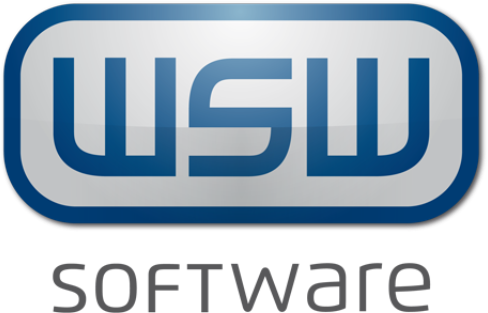To remain competitive in the long term, companies must constantly improve the efficiency of their production. To do this, however, they first need an overview of the current status of their processes, orders and machines. Store floor data collection, including machine data collection, is responsible for this task. Ideally, it provides all the data that those responsible in production need in order to plan, control, monitor and optimize their processes in the best possible way. In addition, the digital information is necessary to automate production processes.
Definition: What is Production Data Acquisition (PDA)?
Production data acquisition (PDA for short) is the collection and storage of current data about processes and conditions in a company. This measure is particularly relevant for manufacturing companies, since the PDA provides important data for the Production planning and control supplies.
The organizational operational data consists of:
- Order data: e.g. production data (times, quantities, qualities), work progress, order status, order-related feedback on individual operations
- Personnel data: e.g. working hours, attendance times, further data for wage calculation
The technical operating data are as follows:
- Machine datae.g. number of pieces produced, malfunction messages, switching frequencies, interruptions, interventions by machine operators, maintenance data, material and energy consumption, measured values from sensors
- Process data: e.g. quality, setting data, process parameters
What are the tasks and objectives of Production Data Acquisition?
The core task of store floor data collection is to record the organizational and technical data of a plant correctly and as promptly as possible in order to create information transparency for all important issues in production. Furthermore, the PDC serves the purpose of documenting costs, services and consumption and allocating them according to the source. On this basis, important conclusions can be drawn for the planning and control of production and manufacturing. In consolidated form, PDA data also provides a solid basis for the (operational and strategic) optimization of manufacturing processes.
What are the advantages of Production Data Acquisition?
If production data acquisition is implemented consistently and in a technically targeted manner, a whole range of benefits will result:
- Transparency of all relevant production data
- Clear overall picture of the state of production
- Real-time reporting of malfunctions
- Optimal utilization of resources (machines and personnel)
- Risk minimization
- Better calculability of orders
- Detection of improvement potentials through target/actual comparisons
- Higher customer satisfaction through accurate estimation of delivery times
- Continuous, data-based optimization of processes
- Uniform (partially) automated data acquisition
- Relieving the employee of non-value-adding activities
- Higher productivity
Taken together, these aspects help to increase efficiency, save costs and secure the competitiveness of manufacturing companies in the long term.
Definition: What is Machine Data Acquisition (MDA)?
Machine Data Acquisition (MDA for short) is a subarea of store floor data collection. Machine- and production-related actual data is collected and collated as part of MDE. This can be used for a variety of purposes - for example, for process control, for monitoring machine utilization, for planning and controlling production orders, and for identifying optimization potential in manufacturing processes.
In detail, the following machine data (product data and process data) are recorded for this purpose, for example:
- Production volume
- Rejects
- Machine runtime
- Utilization
- Reliability and availability
- Machine status
- Energy and material consumption
- Downtime and setup times
- Fault times and reasons
What are the tasks and objectives of Machine Data Acquisition?
Machine data acquisition has several tasks. It not only records production quantities, but also supports machine monitoring in real time. It is also responsible for reporting malfunctions. Its data can also be used to analyze production processes and machine downtimes in more detail.
The overriding goal of machine data acquisition is to provide reliable data in order to increase the productivity of a company's manufacturing processes. However, the optimization of order planning through transparent information on current machine utilization is also one of the goals of MDE.
What are the advantages of Machine Data Acquisition?
Through the (automated) acquisition of machine data, industrial companies have numerous advantages:
- Optimized machine running times
- Better machine availability
- Accurate recording of setup and throughput times
- Better overview of machine utilization
- Better planning of maintenance measures
- Better planning of production orders
- Possibilities for automatic recording of quality data
Taken together, these measures ensure a continuous improvement in production and an ongoing increase in its efficiency.
What is the difference between Production Data Acquisition (PDA) and Machine Data Acquisition (MDA)?
Production data acquisition and machine data acquisition differ primarily in the range of information recorded. MDA, for example, focuses primarily on data from manufacturing resources (machines and systems) within production. PDA, on the other hand, records all possible operating data of a company - including machine data.
In order to create the greatest possible transparency for the processes in the company, a combined use of store floor data collection and machine data collection is recommended. In this scenario, the MDA provides data on resource utilization, while the information on material flow and the order situation comes from the PDA. Incidentally, it is only through this combination of data that it is possible to digitalize and automate manufacturing processes across the board. Thus, the targeted PDC-MDE combination is an important step on the way to the smart factory.
How does Production Data Acquisition & Machine Data Acquisition work?
Companies need a PDA system to record operating data and machine data. In the past, the corresponding data and measured values were noted down by hand and passed on to those responsible for production. However, manual data entry is error-prone, slow and time-consuming for employees. In addition, the data is not available in real time with this method.
Today, PDA is therefore generally carried out digitally. PDA terminals or mobile end devices are often used for this purpose for the organizational operating data. The employees enter their accumulated information there. This information is then processed as part of the Manufacturing Execution System (MES) sent to a PDA, where they are processed and then used as KPI / OEE are available. In parallel, this information can be transferred to downstream systems such as an advanced planning and scheduling system (APS) or ERP software to enable better planning of production.
Automatic acquisition of operating data
In the course of industrial digitalization (Industry 4.0), automated processes for store floor data collection are increasingly being implemented. For example, modern PDA terminals offer options for barcode and RFID recognition. In addition, data collection and transmission can be further automated using various methods.
For example, machine data can be collected using mechanical solutions such as counters. However, the disadvantage of this approach is that the collected data must be manually noted or digitally converted in an intermediate step. The goal should therefore be to capture operating and machine data digitally right from the start. Only then can process activities flow immediately into the further processing systems.
In order to implement automatic machine data acquisition, some technical prerequisites have to be met. Modern machines are less problematic in this respect. This is because they are equipped with current technologies such as an OPC architecture and a digital microcontroller control, record their data online via interfaces or store it on a data logger. Older plants, often called brownfield plants, on the other hand, do not have a suitable MDA interface. In this case, sensors and controllers must first be retrofitted to connect the machines and integrate them into the digital processes. Often, just a few sensors / gateways are enough to collect a minimum of information for the MDA without having to modernize the plants at great expense.
Conclusion: PDA and MDA as the basis of Industry 4.0
The digital recording of operating and machine data not only improves the transparency, plannability and controllability of production processes. It is also the first necessary step in the digital transformation and automation of the entire manufacturing process within the framework of Industry 4.0. In this respect, PDA and MDA play a central role in the future of production companies. Those responsible should therefore promptly address the implementation of solutions for automatic production data acquisition and machine data acquisition.
FAQ
We explain the most important terms related to production data and machine data acquisition here:
What is BDE?
PDA is the abbreviation for production data acquisition. It is a procedure with which a plant collects actual data about its processes and conditions.
What are the advantages of BDE?
Professional PDA leads to lower costs and higher efficiency in the long term. In addition, the resulting information transparency makes it possible to continuously improve processes and thus remain competitive in the long term.
What is MDE?
MDE is the abbreviation for machine data acquisition. This is a process for recording, storing and providing information from production machines and systems.
What are the advantages of MDE?
If PDC is automated and digital, companies gain a real-time insight into the performance and condition of their machines. On this basis, production can be monitored transparently and optimized in many areas. Among other things, this increases the Overall Equipment Effectiveness (OEE).



